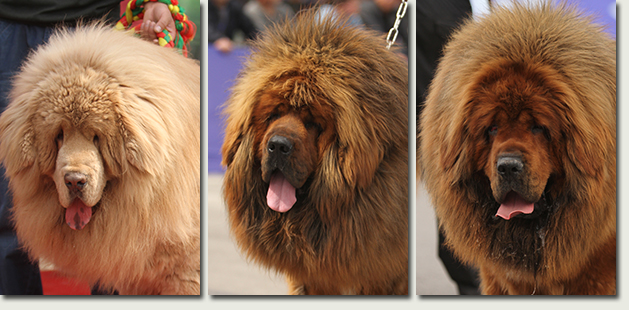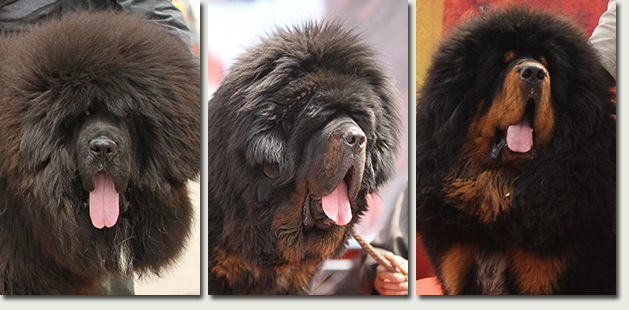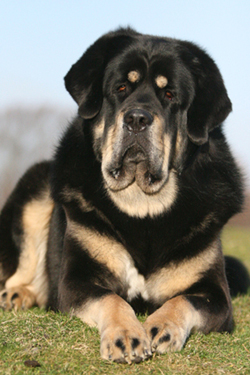Diversity
The many faces of the Tibetan Mastiff
When you first get in contact with the TM you soon notice that it consists of several different types. A novice in the dogworld would have trouble seeing that they all belong to the same breed and it can be a bit confusing before you understand that things are as they have always been. Diversity is something that follows the TM through the centuries. This is a breed hailing from the vast region of the Himalayas. The people of this region have used their dogs for many tasks and demanded dogs capable of performing the work at hand. It is not strange that different types would evolve to better suit the life and hardship in different areas.
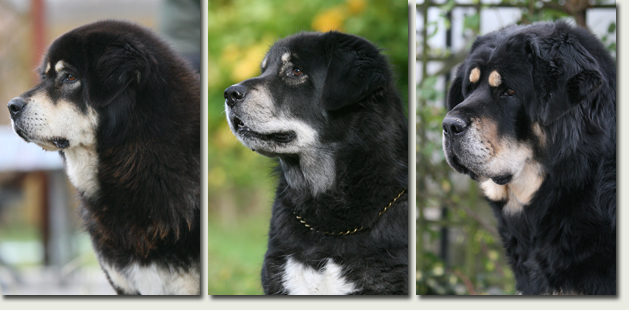
We have the smaller and lighter TM that watched over herds on the slopes and plains. We have the heavier and larger TM said to guard monasteries and monks. We have different types from different areas of Tibet - smoothcoated ones and longhaired ones. They have all adjusted to the life around them and have been shaped into the dogs we see today. It was the ones with power in their bark, the brave ones, the clever ones that carried on the legacy.
There was a need for agile and strong dogs who could guard the livestock and protect them from foes and there was a need for impressive gatekeepers at the monasteries, holding intruders at bay with their deep voices and fierce look.
The dogs had more roles to play than these two, they were used in many ways and adjusted to the conditions of life.
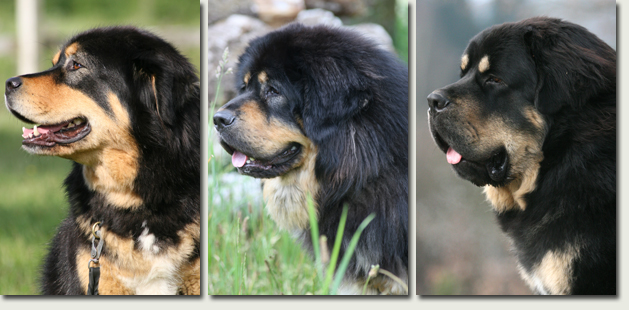
When these dogs came to the west they were all called by their new name: Tibetan Mastiff. People thought of them as one breed and being used to the breeds in the west they had a very clear image of what a breed is - dogs who are all similar in type, temperament and looks. The TM does not quite fit that description. They all have similarities but are they really just one breed? The question is a hot topic in the TM world.
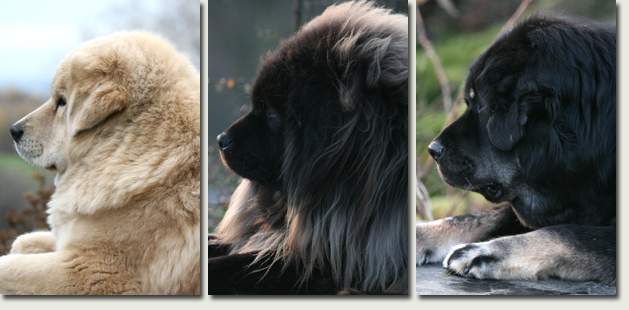
In the west we used to seperate the breed into two types. This has never been official in any way, but to people in the breed these terms are well known:
 The lighter boned and smaller type with dry lips. |
|
To me this is a very interesting topic and I am amazed at the feelings that this subject brings out in breeders and owners. It is very sad to hear negative things about the different types since they are all gathered under one name. I think it's strange that all these different dogs have been pushed into one form but at the same time I am in love with the diversity of our beautiful breed. They are all very special, no matter if they are big, small, heavy, light, longhaired, smooth, golden, black or blue!
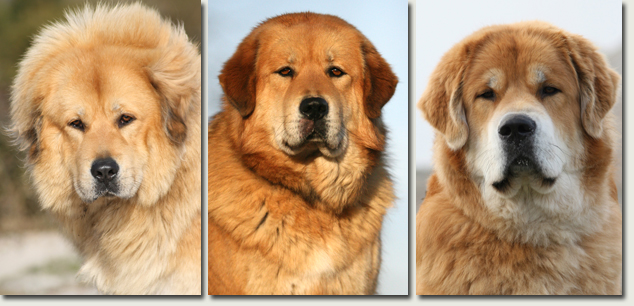
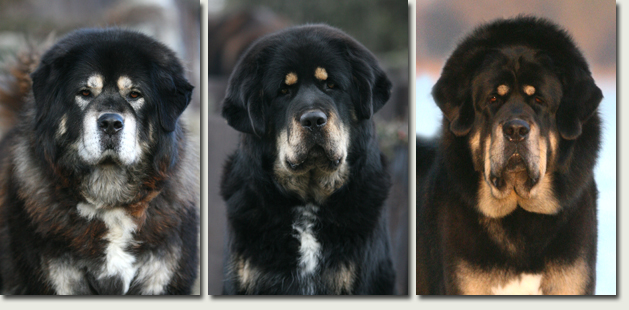
CHINESE MASTIFF is NOT a type within the TIBETAN MASTIFF breed
In recent years a completely new "variation" of tibetan mastiff emerged with its origin in China. To dedicated fanciers of tibetan mastiff it's known as CHINESE MASTIFF, but also goes under the names MARKET TYPE tibetan mastiff, Pig mastiff, Chinese Tibetan Mastiff.
These dogs are NOT tibetan mastiffs, and they certainly is NOT a type within the breed, no matter what the breed name on their pedigree may say. They are a modern creation, made in China at the beginning of our century and consists of a lot of different breeds. All used to add size, coat and bone to the breed. It have since spread across the rest of the world. These dogs are not to be considered Tibetan Mastiffs because they are simply crossbreeds with pedigrees, sadly being used as studs all over the world.
The dogs below are typical exampels of chinese mastiffs - exaggerated in every way.
The tibetan mastiff was never a breed of exaggerations, it's a breed of moderation. Their past as functional working dogs have dictated their evolution unlike the chinese mastiff who was created to saturate a huge demand when the tibetan mastiff ended up in the spotlight at the beginning of this century.
It was a sign of wealth, status and prosperity to own a tibetan mastiff in China, and simplified the birth of the chinese mastiff was a result of demand and supply, and of course the result of backyard breeders seeing an opportunity to cash in on the hype. Make no mistake, it was a hype!
No one in the breed have missed the headlines about "the world's most expensive breed".
A lot of these chinese mastiffs were sold to the west and breeders here were thrilled to add new blood to the small genepool, but sadly did so without asking questions, like for example "how come this type has never been seen before?".
Nowadays it can be a challenge to actually find a tibetan mastiff without chinese mastiff blood, bred in the west.
